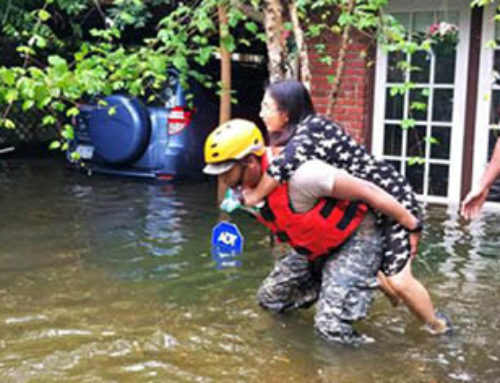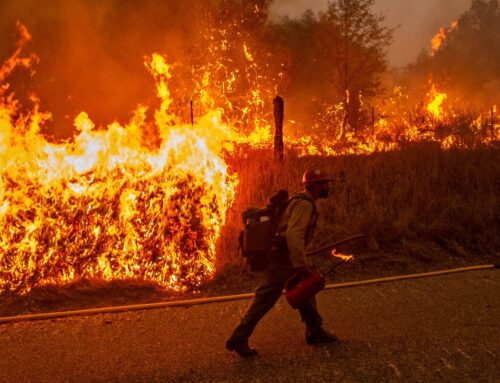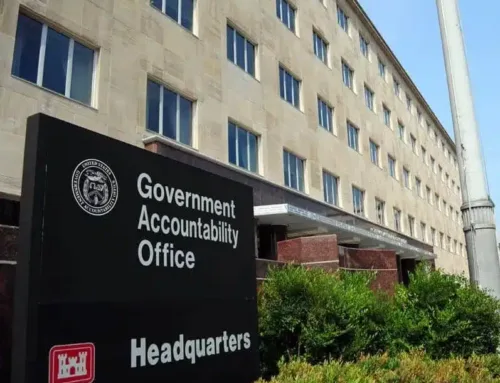This week TCS testified before Congress about climate change, disaster policy, flood insurance, and billions of dollars in spending on rebuilding post-disaster. This included – not surprisingly – how to not only rebuild and pre-spond to future disasters, but also to spend better.
The House Financial Services Committee’s Subcommittee on House, Community Development and Insurance held the hearing. It was virtual, but you can be sure that we made sure the TCS voice was heard above the Zoom (or in this case WebEx) din.
You’ve heard our flood insurance schtick before. Bottom line – no pun intended – the National Flood Insurance Program is underwater. It has borrowed nearly $40 billion from the U.S. Treasury and continues to subsidize insurance for homeowners in extravagant – one lawmaker at the hearing called “fancy pants” – properties.
Fancy pants or not, the cross subsidies need to end. The Government Accountability Office (GAO) has documented large cross-subsidies, many of which benefit high-income homeowners. They found that over 78 percent of subsidized properties in the NFIP are located in counties with the highest home values (the top three deciles), while only five percent of subsidized properties are in counties with the lowest home values (the bottom five deciles).
The best way to reduce the rate – for property owners and taxpayers – is to reduce the risk. It’s not about artificial rate caps that hide the real risk to people, but about finding ways to fund mitigation either at the property level or at the community level. If a property owner is unable to afford the premium, means-tested assistance outside the rate structure should be provided.
To their credit FEMA has launched a new effort to better price actual risk for properties. The new program, Risk Rating 2.0, is supposed to start for new properties and policies in October and for existing policyholders next year. According to FEMA, they worked with public, private, and nonprofit organizations to incorporate more data and flood variables to determine actual risk to properties, and it will be updated annually. In theory, this will reduce some of the cross-subsidies that have plagued the program. In addition, FEMA predicts that 23 percent of policyholders will see an average decrease of $86 a month and 66 percent will see an increase of less than $10 dollars and another 7 percent an increase of less than $20 per month. Four percent will see an increase of more than $20 per month, but those are for high value homes in high-risk areas. This adheres to the existing rate caps.
Another area that was explored in the hearing was the Community Development Block Grant – Disaster Recovery program. CDBG-DR was first created in 1992 after Hurricanes Andrew, Iniki, and Omar to supplement existing disaster-related authorities to help communities rebuild after major disasters. Specifically, these funds are for long-term recovery, including restoration of infrastructure and housing and economic revitalization, but also future disaster mitigation activities. Since it was first created, nearly $90 billion has been appropriated to the program.
While there is some program direction, in reality there is a great deal of leeway granted to the Housing and Urban Development (HUD) Secretary and the implementing states and communities. Flexibility is an important element of the program, but stability and predictability are also critical to successfully meeting program goals. The program lacks its own statutory authorization. Congress turns to CDBG-DR after major disasters, appropriating funds and directing HUD to implement. In turn, HUD governs the program through Federal Register notices. As you might imagine, the CDBG-DR implemented by the George W. Bush Administration HUD after Hurricane Katrina is different than the one implemented by the Obama Administration HUD after Superstorm Sandy, which is different than the one implemented by the Trump Administration HUD after Hurricane Harvey. This lack of continuity delays implementation and, ultimately, delivery of critical funds. Furthermore, the lack of organic authorization for this program stymies effective accountability and oversight.
Programs such as CDBG-DR must take into account the needs of disadvantaged populations and ensure that they have access to the benefits, but also to tools to mitigate, adapt, and pre-spond to future disaster events to make them less costly. While it varies by situation and peril, we know that every dollar spent on mitigation can save as much as $6 or more in post-disaster response.
CDBG-DR is about the long game and rebuilding communities in ways that make people less vulnerable to future disasters. Each disaster is an opportunity – a tragic opportunity, but an opportunity nonetheless – to make communities more resilient and to pre-spond to future disasters.
One other truism of disasters is that they have a disproportionate impact on poor and minority populations. In many cases these individuals don’t have savings to rely on while they rebuild, they may have lost their transportation to work, and their place of business may have been destroyed as well. Because of historically discriminatory policies or a need for lower housing costs, these individuals are often situated in less desirable, more vulnerable, higher risk areas. They may not be able to repay loans made available after disasters or provide sufficient funds of their own to tap federal programs.
Climate change, its impacts, NFIP, and CDBG-DR are critical issues not just for their budget and taxpayer impacts, but for society as a whole. Federal policies must better promote realistic and responsible solutions to climate change including targeted investments that lift innovative solutions and reflect the needs and experiences of low-income and minority communities. The goal must be to develop risk management and mitigation strategies that enable communities, infrastructure, and industries to become more resilient, face less risk, and can better adapt to and mitigate future costs and damages of climate change.










Get Social